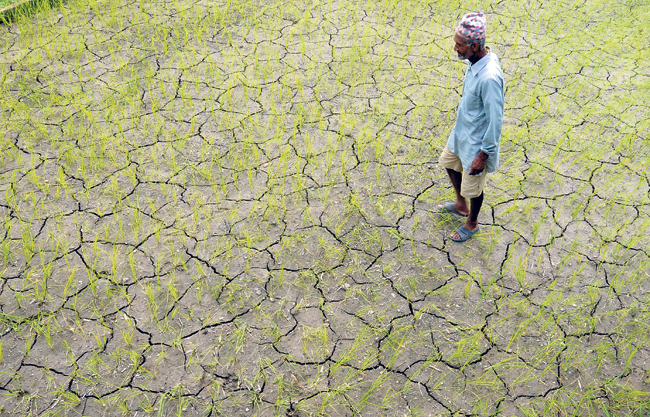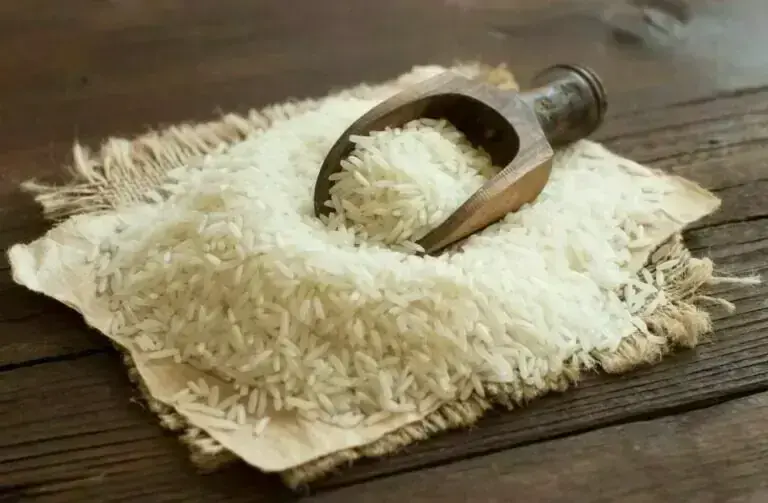Tags
Grain crisis deepens in fertile Madhesh: Only 33.78 pc paddy fields planted
Once known as Nepal’s granary, Madhesh Province is witnessing a steady decline in paddy cultivation. Recent data shows that only 33.78 percent of arable land in the region has been planted with rice this season. Farmers blame the shortage of water and fertilizer as the primary reasons for this worrying trend.

By MITHILESH YADAV
KATHMANDU, July 15: Once known as Nepal’s granary, Madhesh Province is witnessing a steady decline in paddy cultivation. Recent data shows that only 33.78 percent of arable land in the region has been planted with rice this season. Farmers blame the shortage of water and fertilizer as the primary reasons for this worrying trend.
Agriculture is considered the backbone of Madhesh Province’s prosperity, with the government pledging support for commercial farming and irrigation each year. However, when it’s time to plant rice, farmers are left helpless due to a lack of irrigation and fertilizers.
Despite the monsoon entering Nepal on June 15, most of Madhesh is still waiting for rainfall. While the hilly regions face landslides and floods, the Madhesh government has declared the province drought-affected, according to Rajkumar Lekhi, government spokesperson and Minister for Home, Communication and Law. The provincial cabinet made the decision last Thursday due to the absence of rainfall during the peak planting season. The cabinet also decided to request relief from the federal government.
The Directorate of Agricultural Development reports that only 125,888.6 hectares of paddy have been planted out of 372,645 hectares designated for rice farming in the province, which has 542,580.78 hectares of cultivable land. The most paddy was planted in Parsa district, while Saptari saw the least, according to Senior Horticulture Officer Pradeep Kumar Yadav.
Despite the 2023/24 Economic Survey showing that 273,410 hectares of land in Madhesh Province is irrigated, the current level of paddy plantation raises doubts about the accuracy of government data. Last year, 273,592 hectares were said to be irrigated. Imports sustaining grain reserves
The Ministry of Agriculture reports Nepal requires 6,042,341 metric tons of rice annually, of which 555,839 metric tons are imported. Based on the 2021 census, Madhes has a population of 6.12 million, and each Nepali consumes 137 kg of rice annually. Internationally, the recommended annual rice intake is 121 kg per person, which would total about 741 million kg for Madhes.
However, Madhes produced only 1,296,607 metric tons of paddy last year. Given that only 60 percent of paddy converts to rice due to losses during milling (8 percent bran, 8 percent broken, 22 percent husk, 2 percent dust), the rice output falls short of provincial needs.
Farmers in distress
Sadhuram Mahato, a farmer from Danda Tole, Golbazar Municipality-10 in Siraha, has three bighas of land but hasn’t planted rice yet due to a lack of water and fertilizer. His rice seeds are drying up in the fields. He said he tried to irrigate 10 katthas with a water pump, but the rice has already withered.
Similarly, Rajeshwar Mahato of Golbazar Municipality-9, who owns two bighas of land, left his fields fallow. In Bariyarpatti, Rasalal Yadav used to grow rice, wheat, mustard, and lentils, but now only grows limited rice and wheat due to the lack of irrigation and fertilizer.
In Bandipur, Karjanha Municipality, farmer Muktilal Singh said water from the Kamala canal isn’t reaching his field. “The planted rice is drying up due to cracked soil,” he said.
According to farmer Surendra Mahato of Badaharamaal, the tradition of multiple crop farming has vanished. Due to the lack of fertilizer and water, his household now buys rice despite having once produced enough for the family.
Ramphal Saday from the Musahar community says he is unemployed for 10 months of the year due to limited farming. Previously, multi-crop farming provided year-round employment.
From export to import
Former customs officer Mohammad Sarif of Nawatoli, Siraha-14, recalls how, three decades ago, ox-carts loaded with paddy would be exported to India’s Darbhanga. “Now, the same people who used to sell rice have to buy it,” he said, blaming unsupportive policies and unchecked exploitation of natural resources.
In Tenuwapatti, a canal construction project to channel Kamala River water remains incomplete even after a decade. Local farmer Rambabu said, “Millions invested by the government have brought no change to our lives.”
Pointing to Indian trucks unloading rice in Bariyarpatti, farmer Rasalal Yadav said, “Twenty years ago, we used to take Madhes-grown rice to Madhubani and Darbhanga. Now, we import it from across the border.” Fellow farmer Dorik Yadav added, “Times have reversed; those who once sold rice are now buying it.” Rajendra Yadav argued that the provincial government’s inaction has mirrored the federal government’s negligence.
Falling production and shrinking farmlands
Paddy production in Madhes has declined steadily across all eight districts. Over the past five years, 8.5 million metric tons of paddy were produced from 2.3 million hectares of land, according to the Agricultural Directorate.
Last year, the Ministry of Land Management, Agriculture and Cooperatives recorded paddy production at 1.29 million metric tons across 370,350 hectares, which is 125,829 metric tons less than required. In 2018/19, the province produced 1.49 million metric tons of paddy from 401,906 hectares. In 2019/20, 1.42 million metric tons were produced from 377,611 hectares, in 2020/21, 1.43 million metric tons were produced from 382,275 hectares, in 2021/22, 1.39 million metric tons from 381,898 hectares and in 2022/23, 1.54 million metric tons were produced.
https://myrepublica.nagariknetwork.com/news/grain-crisis-deepens-in-fertile-madhesh-only-3378-pc-paddy-fields-planted-31-44.htmlPublished Date: July 15, 2025






